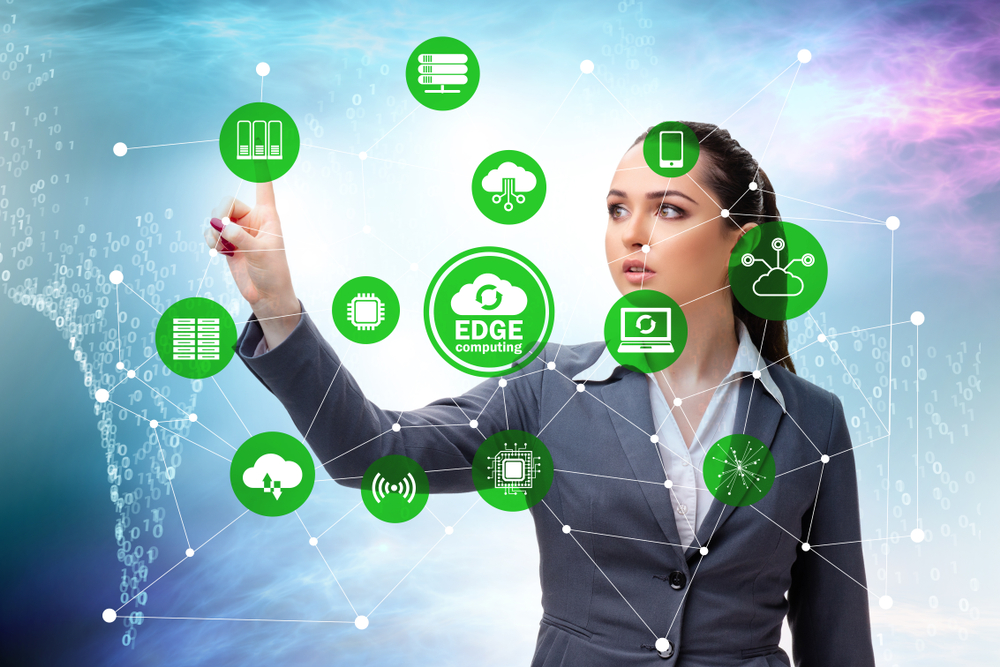Well, we have come to the ‘edge’ of 2019, let me now try and show you what the future looks like. Welcome to Edge Computing. Edge Computing is a distributed, open IT architecture that features decentralised processing power, enabling mobile computing and Internet of Things (IoT) technologies. Edge Computing allows data to be processed by the device itself or by a local computer or server, rather than being transmitted to a data centre. Basically, what it means is that computing is done at or near the source of the data, instead of relying on the cloud at one of a dozen data centers to do all the work. It doesn’t mean that the cloud will disappear. What it means is that the cloud is coming to you! Phew, just when we thought that moving to the cloud will solve a lot of our problems! Welcome to living on the ‘edge’ of technology.
Gartner defines Edge Computing as “a part of a distributed computing topology in which information processing is located close to the edge – where things and people produce or consume that information.” At a fundamental level, Edge Computing brings computation and data storage closer to the devices where it’s being gathered, rather than relying on a central location that can be thousands of miles away. This inter-device automation and interaction will allow organizations to be closer to their customers and provide near-real-time insights and actions.
Driving a superlative customer experience is at the heart of Edge Computing as it brings the action closer to the consumer by allowing smart applications and mobile devices to respond to data almost immediately eliminating latency, making it a critical enabler for on-demand, actionable and real-time engagement.
The growth of Edge Computing is driven by the explosion in IoT devices which connect to the net for receiving or sending data back to the cloud. “Edge Computing has evolved significantly from the days of isolated IT at ROBO locations,” said Kuba Stolarski, research director for Infrastructure Systems, Platforms, and Technologies at IDC. “With enhanced inter-connectivity enabling improved edge access to more core applications, and with new IoT and industry-specific business use cases, edge infrastructure is poised to be one of the main growth engines in the server and storage market for the next decade and beyond.”
Some of the key benefits of Edge Computing are:
- Providing agility to drive business growth
- Enabling creation of new business models
- Removing lag and latency
- Reducing load on networks
- Driving cost optimization
- Enabling greater business continuity
- Enhancing security
We in India are beginning to discover and understand Edge Computing but it’s been around for a couple of years. HP, in fact has a live use case at the Levi’s Stadium, in Northern California. It is one of the most advanced edge-empowered sports facilities in the world. Its Venue Next edge platform, HPE Intelligent Edge equipment, and mobile app helps fans find not only their parking spaces and their seats but also purchase refreshments and report security issues. It enables stadium management to make real-time, data-driven decisions. More than 2,000 battery-powered beacons are installed at 100-foot intervals across the stadium.  Source: Deepak Puri, Levi’s Stadium uses IoT to enhance 49ers’ fan experience, Network World.
Source: Deepak Puri, Levi’s Stadium uses IoT to enhance 49ers’ fan experience, Network World.
A plethora of innovations including connected cars, robots, drones, mobile devices, cameras and sensors is driving the exponential growth of Edge Computing. Always changing and evolving business demands will redefine infrastructure needs, the ask is to reduce complexity and increase efficiency at an enterprise level. The advent of 5G in the near future will further fuel this drive. Edge Computing will also lead to a lot of social good and see an increase in smart city initiatives. Living on the Edge of new technology can certainly help.

